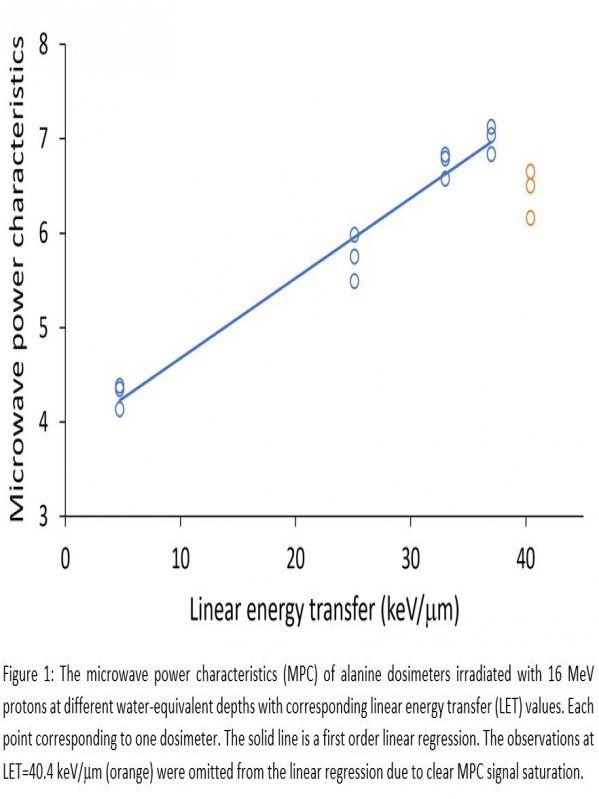Alanine dosimeters for determining linear energy transfer in proton beams
Ravikumar Nattudurai,
Norway
PH-0319
Abstract
Alanine dosimeters for determining linear energy transfer in proton beams
Authors: Ravikumar Nattudurai1, Delmon Arous1,2, Nina F.J. Edin1, Eirik Malinen1,2
1University of Oslo, Department of Physics, Oslo, Norway; 2Oslo University Hospital, Department of Medical Physics, Oslo, Norway
Show Affiliations
Hide Affiliations
Purpose or Objective
To investigate
microwave power characteristics (MPC) of alanine dosimeters irradiated with
low-energy protons and identify associations between MPC and the proton linear
energy transfer (LET).
Material and Methods
Thin-film
alanine dosimeters were irradiated with 16 MeV protons at a research cyclotron
and with Co-60 g rays. Five different water-equivalent depths, with
3 dosimeters at each depth, were used in the proton experiments. A dose of 45
Gy was delivered at all depths. Monte Carlo simulations using the FLUKA code
gave corresponding dose-averaged LET values at each depth of 4.7, 25.1, 33.0,
37.0, and 40.4 keV/mm. Using electron paramagnetic resonance
spectroscopy, the alanine signal was recorded for six different microwave
powers (range: 1.6-50.6 mW). The MPC was defined as the change in the alanine
dosimeter signal per increase in applied microwave power. Regression analysis was
used to evaluate the association between MPC and LET.
Results
Minimum
and maximum MPC of 4.3±0.1
and 7.0±0.1
(mean±SD),
respectively, were found for LETs of 4.7 and 37.0 keV/mm. For
comparison, the MPC for Co-60 g-irradiated dosimeters was 4.7±0.3. The mean sample-to-sample relative standard
deviation in MPC was 2.2 %, indicating rather high precision. Plotting the MPC
against the LET show a highly significant linear association (Figure 1; r2=0.986,
P= 0.007). Data for LET of 40.7 keV/mm
was omitted in the linear regression due to a suspected saturation in MPC at
this LET level.

Conclusion
We
found a significant positive association between alanine MPC and proton LET,
which to our knowledge is the first demonstration of the potential use of
alanine dosimeters as an ‘LET detector’. The findings may open for novel
applications using alanine in proton beam dosimetry. The increase in MPC with
LET is most likely due to a decrease in T2 relaxation time with increasing
local radical spin density in the alanine crystal lattice. The saturation in
MPC at the very extreme proton LET of 40.7 keV/mm
indicate limited applicability for carbon ion beams, but further studies are
needed for elucidation.